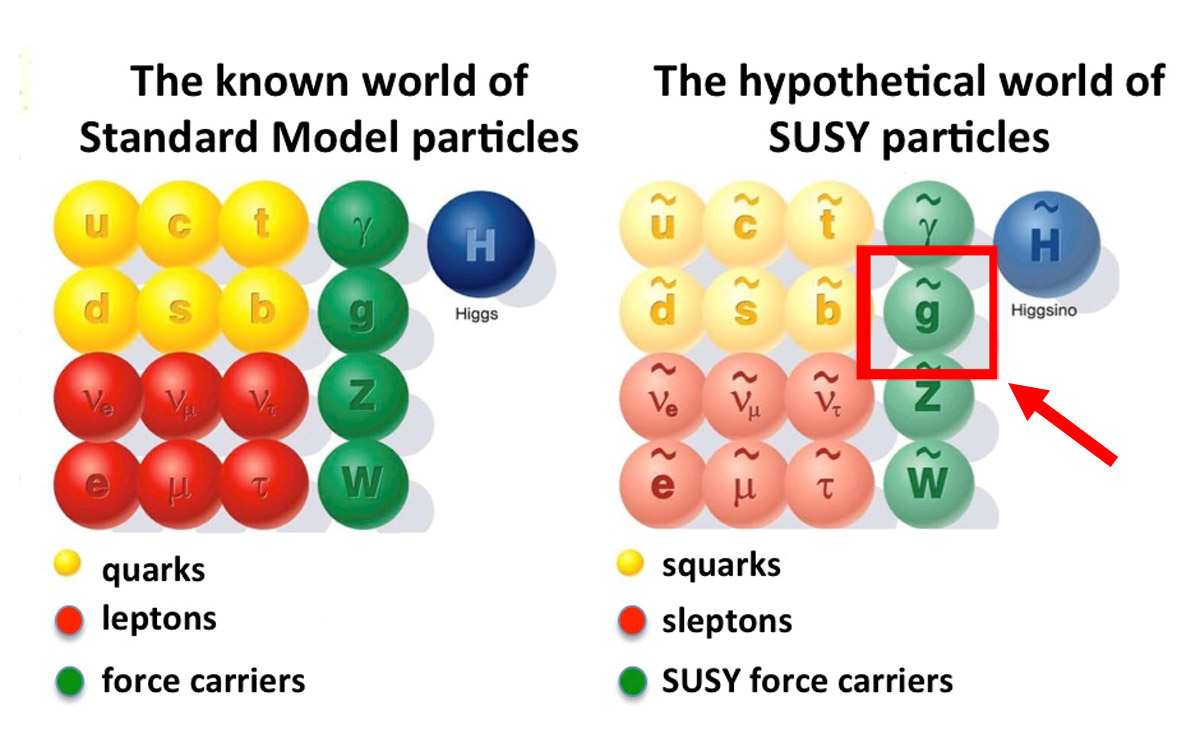
One of the biggest unanswered questions of particle physics is why the mass of the Higgs boson is relatively small when the Standard Model suggests a more natural value would be many thousands of trillions of times higher. We don't know the answer to that question, but a popular proposed explanation invokes the idea of supersymmetry. Theories that include supersymmetry can very easily explain the Higgs boson's low mass.
A theory that includes supersymmetry comes with a price. These theories predict that for every known particle, a cousin supersymmetric particle exists. These cousins have the same properties as the familiar ones, except they have a different subatomic spin. There's only one problem. None of these cousins has been observed. The simplest form of supersymmetry has been definitively ruled out.
Since the simplest scenario is impossible, physicists turn to theories in which supersymmetry is almost true. Physicists say that in these modified theories, the symmetry of supersymmetry is "broken," which in layman's terms simply means that the supersymmetric cousins are heavier than the familiar particles. Under this assumption, supersymmetry is alive and well.
But "alive and well" doesn't mean confirmed. For that, you still have to find the cousins. Unfortunately, supersymmetric theories give us very little guidance as to the masses of the cousins. Thus we have to make some sensible assumptions, look at the data and see what it tells us.
In today's article, I describe the outcome of a search for particles called gluinos, which are the supersymmetric cousins of the gluon. If gluinos exist and aren't too massive, they should be made easily at the LHC. Physicists assumed that gluinos existed and were among the lightest of the supersymmetric cousins. If that is so, then we can ignore the production of other supersymmetric particles. But "among the lightest" is still pretty heavy. These gluinos can make pairs of the top quark, which is the heftiest of the Standard Model particles. Gluinos can also make bottom quarks and all the familiar quarks. In order to make the analysis tractable, physicists only studied events in which the gluinos decayed into top quarks or bottom quarks. Finally, because the gluino is a supersymmetric particle, it must have a daughter particle that is also supersymmetric. The lightest of the supersymmetric particles is electrically neutral and escapes detection. We only see it by noticing that energy is missing.
CMS physicists looked for events with missing energy and in which either four bottom quarks or four top quarks were present. If more were observed than expected, they'd be on to something. Unfortunately, the results were entirely consistent with the Standard Model, meaning gluinos were not observed. However, we now can say that if gluinos exist, they must have masses more than a thousand times heavier than a proton and six times heavier than the top quark.
A version of this article originally appeared in Fermilab Today.
- Log in to post comments

